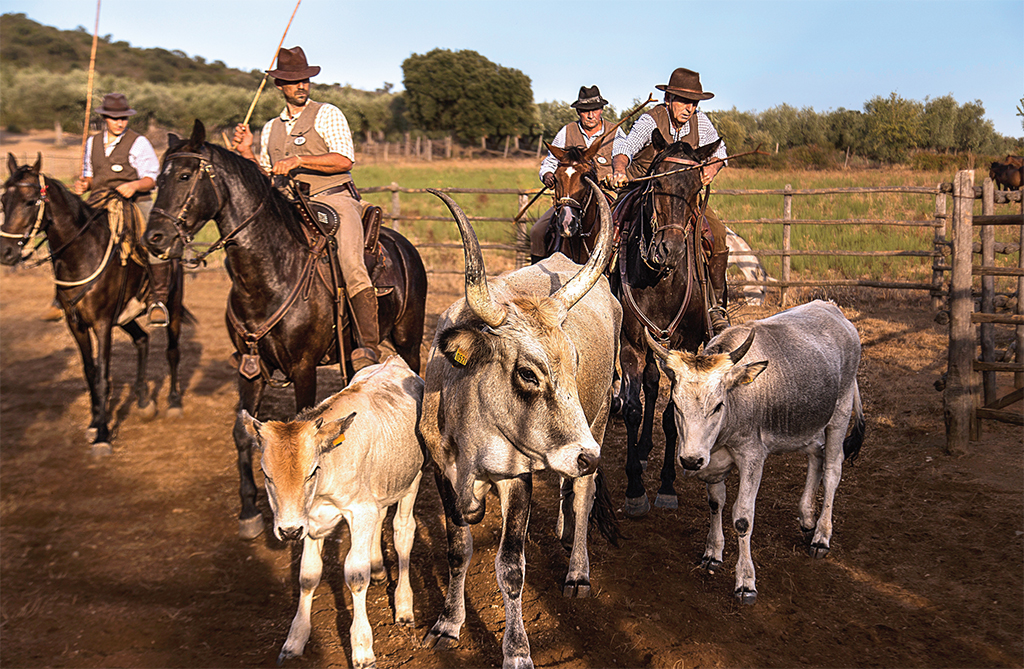
The history of the Maremma Butteri, Tuscany cowboys

Origin and Historical Background of Maremma Butteri
Etruscan and Roman Influence: The tradition of cattle herding in Maremma can be traced back to the time of the Etruscans and Romans. The fertile plains of Maremma have long been used for agriculture and livestock.
Medieval Period: During the Middle Ages, Maremma was characterized by marshes, forests, and plains, which provided ample grazing land for cattle. Cattle herding became a key economic activity during this period.
The Need for Skilled Horsemen: The challenging terrain and vast grazing areas of Maremma required skilled horsemen to manage the cattle. These horsemen gradually evolved into what we now know as the butteri.
Life of the Maremma Butteri
Skills and Expertise. The butteri are known for their exceptional horsemanship, cattle-handling skills, and deep knowledge of the land. They have a unique ability to manage cattle in the challenging conditions of the Maremma region.
Traditional Attire. Butteri traditionally wear distinctive clothing, including wide-brimmed hats, boots, and colorful vests. Their attire is both functional and a reflection of their cultural identity.
Use of Maremmano Horses. The butteri rely on the Maremmano horse breed, which is native to Maremma and known for its strength, agility, and temperament. These horses are essential partners in cattle herding.
Cattle Herding Practices. Butteri use a variety of techniques and tools to manage cattle, such as lassos and long sticks. They are known for their ability to handle large herds and navigate cattle through the challenging terrain of Maremma.
Significance of the Butteri of Maremma
Economic Importance: Historically, cattle farming and beef production were central to the economy of Maremma. The butteri played a crucial role in the success of these industries by ensuring the well-being of the cattle and their safe movement to markets.
Cultural Identity. The butteri have a strong cultural identity that is deeply connected to the history and traditions of Maremma. Their role in cattle herding has been a source of pride and a symbol of the region’s unique heritage.
Conservation of Traditions. The butteri continue to be guardians of traditional practices, helping to preserve the skills and knowledge passed down through generations. Their commitment to these traditions is essential for maintaining the cultural heritage of Maremma.
Tourism and Recognition. In recent years, the butteri have gained recognition and have become an attraction for tourists interested in experiencing the cultural and historical aspects of Maremma. There are opportunities to watch butteri demonstrations and participate in horseback riding excursions.
Challenges and Modernization. Like many traditional occupations, the role of the butteri has evolved with changes in the agricultural and ranching industries. While they still play a vital role in cattle management, they face modern challenges and adjustments.
The butteri of Maremma are iconic figures deeply rooted in the history and culture of the region. Their unique role as skilled horsemen and cattle herders has been integral to the economic and cultural identity of Maremma. Today, they stand as guardians of traditional practices and symbols of the rich heritage of this captivating part of Tuscany, Italy.
Our IGT Toscana Wine Products
-
Capricci Toscana IGT Rosso Tuscany Red Wine
Capricci Toscana IGT Rosso
Original price was: €16.80.€15.00Current price is: €15.00. inc. Sales tax
-
Capricci Toscana IGT Rosso 6 bottles
Capricci Toscana IGT Rosso
Original price was: €100.80.€86.00Current price is: €86.00. inc. Sales tax


